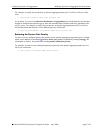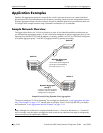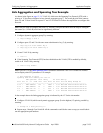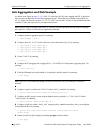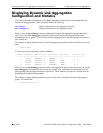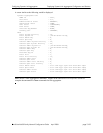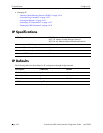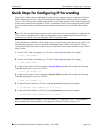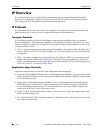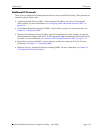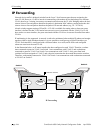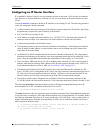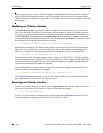
OmniSwitch 6600 Family Network Configuration Guide April 2006 page 14-1
14 Configuring IP
Internet Protocol (IP) is primarily a network-layer (Layer 3) protocol that contains addressing and control
information that enables packets to be forwarded. Along with Transmission Control Protocol (TCP), IP
represents the heart of the Internet protocols. IP has two primary responsibilities: providing connection-
less, best-effort delivery of datagrams through an internetwork; and providing fragmentation and reassem-
bly of datagrams to support data links with different Maximum Transmission Unit (MTU) sizes.
Note. IP routing (Layer 3) can be accomplished by using static routes or by using one of the IP routing
protocols: Routing Information Protocol (RIP), Open Shortest Path First (OSPF). For more information on
these protocols see Chapter 16, “Configuring RIP,” in this manual; or “Configuring OSPF” in the
OmniSwitch 6600 Family Advanced Routing Configuration Guide.
There are two versions of Internet Protocol supported: IPv4 and IPv6. For more information about using
IPv6, see Chapter 15, “Configuring IPv6.”
In This Chapter
This chapter describes IP and how to configure it through the Command Line Interface (CLI). It includes
instructions for enabling IP forwarding, as well as basic IP configuration commands (e.g., ip default-ttl).
CLI commands are used in the configuration examples; for more details about the syntax of commands,
see the OmniSwitch CLI Reference Guide. This chapter provides an overview of IP and includes informa-
tion about the following procedures:
• IP Forwarding
– “Configuring an IP Router Interface” on page 14-7
– “Creating a Static Route” on page 14-9
– “Creating a Default Route” on page 14-9
– “Configuring Address Resolution Protocol (ARP)” on page 14-10
• IP Configuration
– “Configuring the Router Primary Address” on page 14-13
– “Configuring the Router ID” on page 14-13
– “Configuring the Router Primary Address” on page 14-13
– “IP-Directed Broadcasts” on page 14-14
– “Denial of Service (DoS) Filtering” on page 14-14



